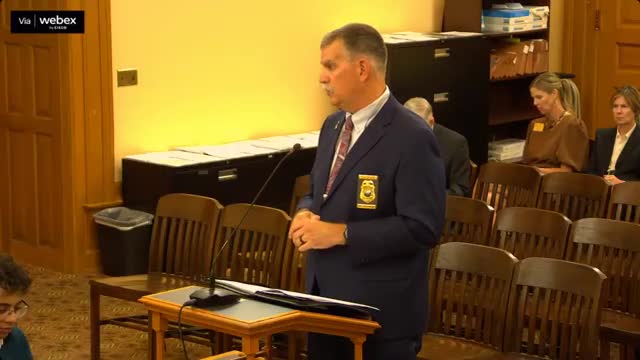State fire marshal urges updating Kansas fire code from 2006 standard; seeks streamlined adoption process
October 23, 2025 | Senate, Committees, Legislative, Kansas
This article was created by AI summarizing key points discussed. AI makes mistakes, so for full details and context, please refer to the video of the full meeting. Please report any errors so we can fix them. Report an error »

Richard Watson, chief deputy/chief of prevention at the State Fire Marshal's Office, told the committee that Kansas currently uses a fire-prevention code based largely on 2006-era national standards for about 95% of the state. He said national consensus standards have been repeatedly updated (most recently in the mid-2020s) and that newer editions incorporate construction materials, technology and performance-based options that can improve safety and offer alternative, less-costly compliance methods.
Watson said the State Fire Marshal's Office has multiple pending updates but that the current rules-and-regulations process is cumbersome for adopting code books that can exceed 1,500 pages. He recommended considering a statutory approach similar to Florida's, in which the state designates a baseline national code edition and then uses a regular update timetable (for example, every three years) tied to stakeholder review to keep the state code current.
Officials from the fire marshal's office said that adopting a modern code can actually reduce costs and administrative friction in some projects by allowing performance-based alternatives; they also noted that the legislature could preserve explicit exemptions (for example, not mandating sprinklers in single-family homes) while allowing code modernization for other uses.
Ending: The committee asked the fire marshal's office to return with a crosswalk showing differences between the 2006-based code and the 2024 edition so legislators could consider options for an updated and more streamlined adoption process.
Watson said the State Fire Marshal's Office has multiple pending updates but that the current rules-and-regulations process is cumbersome for adopting code books that can exceed 1,500 pages. He recommended considering a statutory approach similar to Florida's, in which the state designates a baseline national code edition and then uses a regular update timetable (for example, every three years) tied to stakeholder review to keep the state code current.
Officials from the fire marshal's office said that adopting a modern code can actually reduce costs and administrative friction in some projects by allowing performance-based alternatives; they also noted that the legislature could preserve explicit exemptions (for example, not mandating sprinklers in single-family homes) while allowing code modernization for other uses.
Ending: The committee asked the fire marshal's office to return with a crosswalk showing differences between the 2006-based code and the 2024 edition so legislators could consider options for an updated and more streamlined adoption process.
View full meeting
This article is based on a recent meeting—watch the full video and explore the complete transcript for deeper insights into the discussion.
View full meeting
